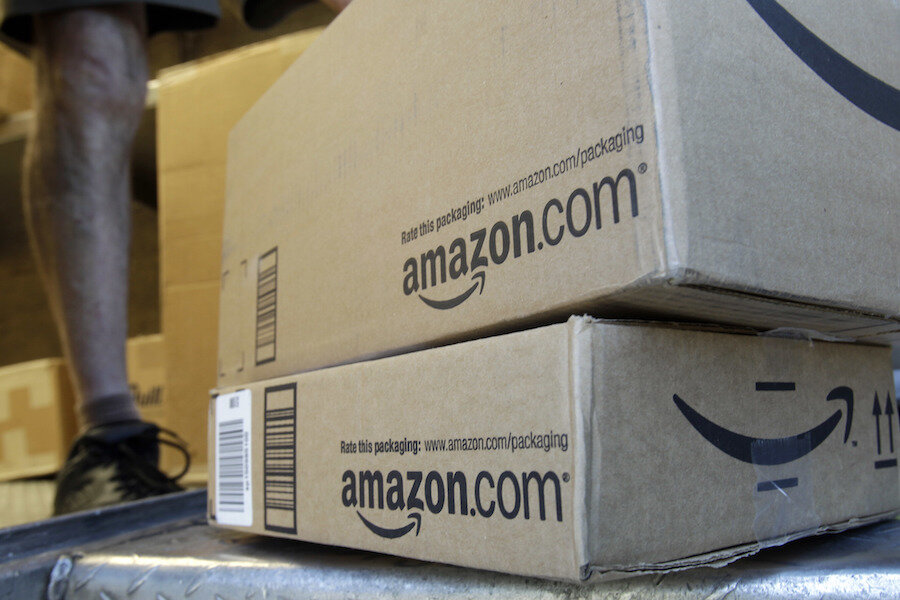Free shipping isn't always free
Loading...
Every online shopper has probably experienced it: You’ve added all the items you need to your cart, and a box pops up that says, “You’re only $11 away from free shipping!”
There are many ways to get your stuff shipped gratis. Some retailers offer it to shoppers who spend a certain amount of money; thresholds often fall between $25 and $99. Other stores, such as Amazon, give it to users in exchange for an annual subscription fee. And members can claim rebates to reimburse their shipping costs at cash-back site FreeShipping.com.
But consumers’ demand for free shipping comes with at least a few unintended consequences.
Our fascination with free shipping
Shoppers have come to expect free shipping, thanks in part to the rise of online commerce, says consumer psychologist Kit Yarrow, a professor at Golden Gate University and author of “Decoding the New Consumer Mind: How and Why We Shop and Buy.”
“It’s funny,” she says. “People go to the post office or UPS and they have no trouble paying for shipping fees. They totally understand the value of a shipping fee. But when it comes to buying something, it does not compute for consumers.”
An overwhelming 88% of consumers say free shipping would make them more willing to shop online, according to the 2016 Walker Sands Future of Retail report. Consumers found this perk more persuasive than streamlined returns processes or same-day shipping.
David Bell, marketing professor at the Wharton School of the University of Pennsylvania, says that Amazon Prime is driving the perception that shipping should be free. Among other benefits, Prime provides members free two-day and even free same-day shipping on a variety of items for a $99 annual fee. This encourages shoppers to place smaller orders, and more of them, rather than waiting until they want enough items to qualify for free shipping based on the amount spent.
“If I qualify for free shipping all the time, that’s going to make me order more,” Bell says. “And even if some of those orders the company loses money on, over the life cycle of my orders, they’re making money on other ones, so it probably evens out.”
Retailers can attract more frequent orders with low free shipping minimums, or bigger orders with higher free shipping minimums, he says.
You may be charged more for free shipping
Retailers that already have high margins — that is, the profit from the sale of the item exceeds the cost of producing it — can generally absorb the cost of shipping, according to Yarrow. But other stores raise their prices in order to give online shoppers free shipping.
“Low-margin retailers are saying, ‘Somehow or another we’ve got to get these costs back into the hands of consumers.’ Otherwise they won’t stay in business,” Yarrow says.
She has noticed that items eligible for free shipping are often more expensive than those that don’t qualify. She recommends consumers compare prices on Google Shopping, which calculates taxes and shipping costs, before making purchases.
We used the website to compare prices on the Echo Design EO30-1720 “Crete” square embroidery decorative pillow. The lowest price came from Macy’s, a store that did charge for shipping. Stores with free shipping on the pillow tended to charge more for the item itself.
For example, in mid-September, Macy’s charged a $27.97 base price with $9.95 shipping for the item, while Bed Bath & Beyond listed a $39.99 base price with free shipping.
Bell, too, recommends vigilance. If a retailer you already frequent begins offering free shipping, check for price inflation.
You may be paying more for free shipping
Even if a retailer doesn’t charge you more for free shipping, you could be paying more of your own volition.
As Yarrow points out, people spend money to get free shipping; it’s tempting to add something else to your virtual cart when you’re only a few dollars from that threshold. But you’ll be spending more than you intended and possibly more than shipping would have cost. It’s rare to find an item that costs exactly the difference, so you’ll likely pay more than the minimum required for free shipping.
In his research, Bell found that consumers prefer free shipping to a $10 discount on their orders. “I think it’s because people feel like it’s an extra you shouldn’t have to pay for,” he says.
Take free shipping offers with a grain of salt, and if you find yourself throwing things you don’t need into your cart to get no-cost delivery, take pause.
“Just like our grandmas told us, nothing in life is free,” Yarrow says. “Such a bummer, but it ended up being true.”
Courtney Jespersen is a staff writer at NerdWallet, a personal finance website. Email: courtney@nerdwallet.com. Twitter: @courtneynerd.
This article first appeared in NerdWallet.







